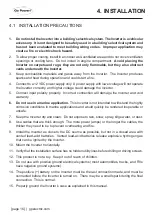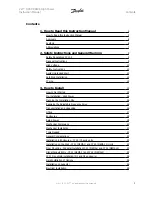
[page 24] | gpelectric.com
5.1 OPERATING PRECAUTIONS
1. Multiple outlet power strips with switches and circuit breakers only interrupt power to the “hot”
receptacle terminals. The “neutral” terminals remain powered with respect to the “ground”
terminals. So the strip switch may be off, but part of the device may still be powered.
2. Inspect supply connections before use to ensure they are tight and that insulation is not
damaged.
3. Do not use this Inverter to power sensitive devices such as medical devices or computers.
Do not use in ignition protected areas.
4. Some rechargeable devices can damage the Inverter. Check the temperature of the device
several times when it is charging. If the device becomes extremely hot; turn the power,
remove the device, and do not use with the Inverter.
5. Check for breakage of parts and any other condition that may affect the Inverter’s operation.
If damaged, have it repaired before use.
6. Do not attempt to power a device, or combination of devices, that will require more than
the rated output of this Inverter. This may damage the Inverter of the attached devices.
7. Appliances such as microwave ovens will normally draw more than their rated current.
For example, a typical 800 watt microwave oven will drawn approximately 1,200 watts.
8. Do not attach a battery charger if the charger carries a warning that dangerous voltages
are present at the battery terminals.
9.
Some fluorescent lamps may not operate properly with this type of Inverter. If the bulb
appears to be too bright, or fails to light, do not use the lamp with this Inverter.
10. Some fans with synchronous motors may slightly increase in speed when powered by the
Inverter. This is not harmful to the fan or to the Inverter.
11. The Inverter will consume some power while on, even without loads attached. Turn the
Inverter off after use.
5. OPERATION









































